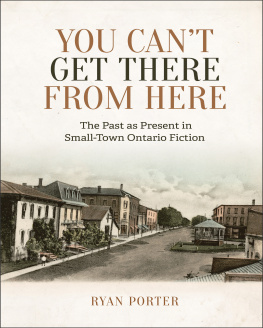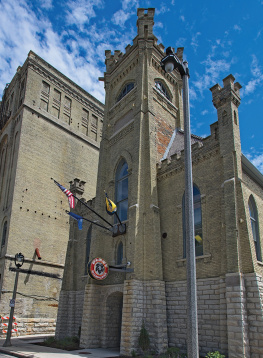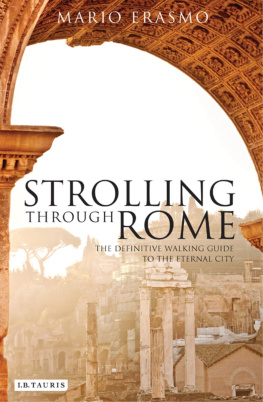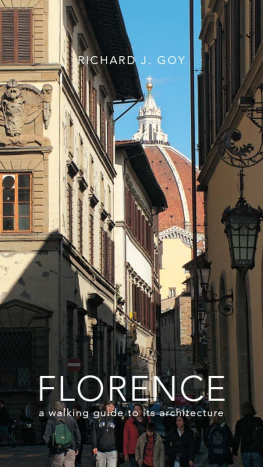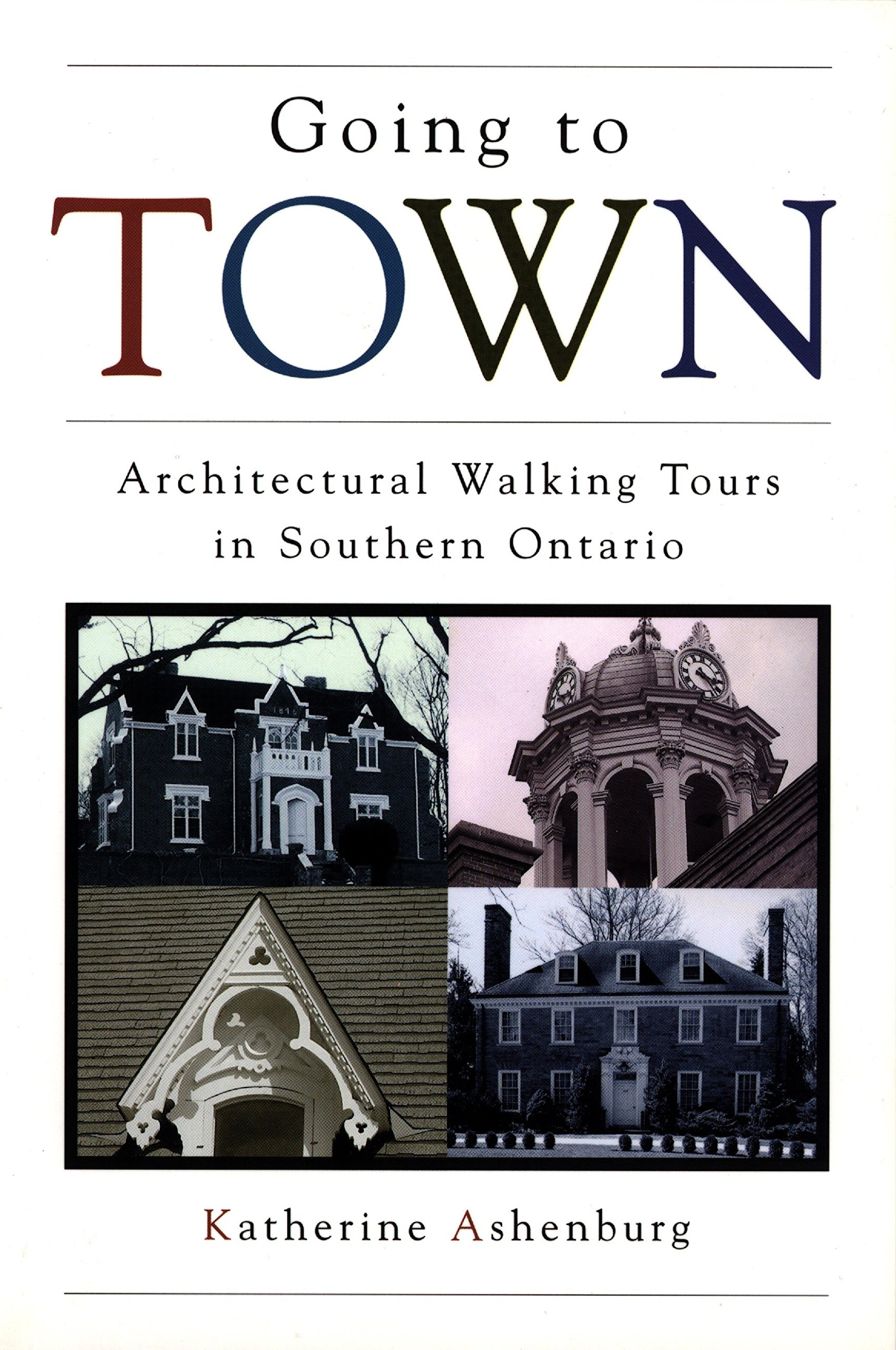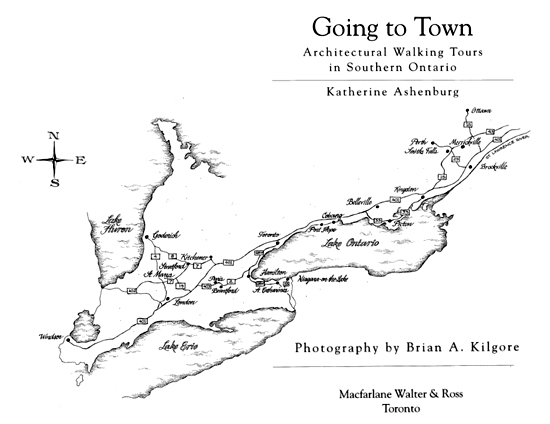Copyright 1996 by Katherine Ashenburg
All rights reserved. No part of this book may be reproduced or transmitted in any form, by any means, without written permission from the publisher, except by a reviewer, who may quote brief passages in a review.
Macfarlane Walter & Ross
37A Hazelton Avenue
Toronto Canada M5R 2E3
Canadian Cataloguing in Publication Data
Ashenburg, Katharine
Going to town: architectural walking tours in Southern Ontario
eISBN: 978-1-55199-637-0
1. Architecture Ontario, Southern Guidebooks. 2. Ontario, Southern Buildings, structures, etc. Guidebooks. 3. Historic buildings Ontario, Southern Guidebooks. 4. Ontario, Southern Tours. I. Title.
NA746.05A75 1996 720.9713 C969312857
Quotations on , from Water Street Days by David Donnell, are used by permission of the Canadian Publishers, McClelland & Stewart, Toronto.
The publisher gratefully acknowledges the support of the Canada Council and the Ontario Arts Council.
The drawings on (bottom) are by Pat Stephens.
Other drawings on are reproduced with permission from The Buildings of Canada:A Guide to Pre-20th-Century Styhs in Houses, Churches and Other Structures, by Barbara Humphreys and Meredith Sykes, illustrated by Michael Middleton, copyright The Readers Digest (Canada) Association Ltd.
v3.1
To Elsie and Norman Ashenburg
who taught me to love old buildings
Contents


A Note on Towns, Buildings, and Dates
If comparisons are odious, choices can be agonizing. The ten towns in this book were, as it turned out, more easily chosen than the buildings. I wanted to map the most architecturally interesting small towns in Ontario, towns whose history was still relatively visible and that could be apprehended more or less completely in a walk of two to three hours. Stratford, the largest, has a population of 27,000; Merrickville, the smallest, has 1,000 inhabitants but a disproportionately high number of intriguing buildings.
Obviously, the older and better preserved the town, the more architectural styles there are to be seen. Perth, Merrickville, Picton, Cobourg, Port Hope, and Niagara-on-the-Lake were not difficult choices. The younger, mid-nineteenth-century towns appealed for a variety of reasons: Paris for its cobblestone buildings, Goderich for its history and unusual town plan, St. Marys for its limestone, Stratford for its downright market-town personality.
My practice in a strange town was to walk and re-walk its streets without much method, taking hundreds of photographs of interesting buildings. In the simplest possible terms, a building had to be visually appealing, a telling example of its type, or historically significant to be considered; a locally important house whose original charm had been effaced by misguided renovations was usually not good enough. When the walk was decided, candidates were eliminated, with reluctance, if they were blocks away from the nearest building on the route; others were cut because the chapter was growing to unmanageable lengths. Every town has scores of attractive buildings not on the walk: keep looking, keep walking.
There are various ways to date an old building: through assessment rolls; local newspapers reports of architectural commissions, building tenders, and finished buildings; architects and builders office records; gazetteers, almanacs, and local histories. Many of the dates in the book derive from the files of the Local Architectural Conservation Advisory Committees (LACACs) and the Architectural Conservancy of Ontario, whose members make use of all those sources. Others have been gleaned directly from the contemporary sources. But, as in many subjects, experts differ, researchers sometimes nod, and even assessment rolls can be open to interpretation. The credit goes to those patient searchers in the original sources; the errors are my own.
Acknowledgments
This book owes its existence to the kindness and expertise of strangers, many of whom did not stay strangers. It began when I walked the chapters of Patricia McHughs Toronto Architecture: A City Guide, and wondered if I could do the same for Ontarios towns. Her example and encouragement were crucial.
Rob Mikel knows more about Cobourg than any living person, perhaps more than any person who has ever lived. He first contacted me when I wrote an article about Cobourg in the New York Times and misidentified the house where Katharine Cornell was married; he has been patiently correcting my mistakes ever since.
Dorothy Wallace, Goderichs pre-eminent architectural historian, read the Goderich chapter, as did Cindy Fisher, Paul Scholten, Roslyn Campbell, and Lucinda Jerry.
In Merrickville, Larry Turner saved me from many errors, and Shirley Watton conjured up dates and the life histories of buildings with remarkable speed.
Peter John Stokes, one of Ontarios most accomplished restoration architects and the author of a fine book on Niagara-on-the-Lakes buildings, graciously gave permission for the use of the glossary he wrote for Rogues Hollow. Also in Niagara-on-the-Lake, William Severin, the curator of the Niagara Historical Society Museum, let me rummage in the museum storage room; Cathy Macdonald provided me with much valuable information about the designated properties; and Joy Ormsby read the Niagara chapter with her keen historians eye.
In Paris, help came from Norman Derrick and the town historian, Fred Bemrose. Margaret Deans, the owner of a cobblestone house, gave me a tour of the towns cobblestone architecture.
In Perth, John J. Stewart made time for a stranger on a busy workday and give her several pieces of good advice. One of those pieces led to Susan Code, who unsnarled tangles and tracked down elusive dates.
David Taylor shared his considerable knowledge of Picton with me and greatly improved that chapter. Tom Kuglin, then the curator of the Prince Edward County Museum, made the museums architectural files available.
In Port Hope, Amy Quinn left me alone for several happy days in the local office of the Architectural Conservancy of Ontario, and Tom Cruickshank was reliably generous with his expertise. Thanks are also due to Marion Garland, who provided part of this books glossary, and to Darrell Leeson, who solved some Dorset Street mysteries.
Mary Smith, the curator of the St. Marys Museum, brought me coffee, cookies, and the museums files on designated buildings one cold September day in 1992, and has been answering my questions at intervals ever since. As tour guide, researcher, and all-round St. Marys expert, Larry Pfaff was invaluable. Thanks also to the museums 1995 summer intern, Jessica Baarda.
At the Perth County Archives in Stratford, archivists Luitzen Reidstra and Carolynn Bart Reidstra preside over their beautifully organized files and gladly undertake to answer queries. Carolynn Bart Reidstra in particular was a careful reader of the Stratford chapter, and dated several buildings. The Toronto architect S. Kent Rawson helpfully shared his research on Stratfords city architect, Alexander Hepburn.



